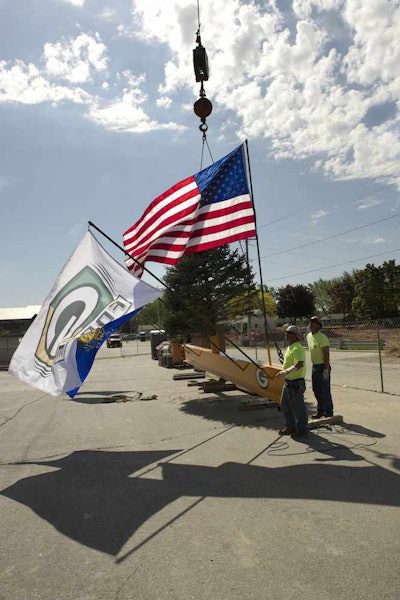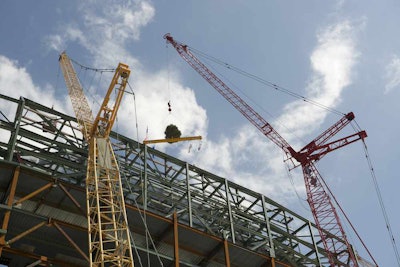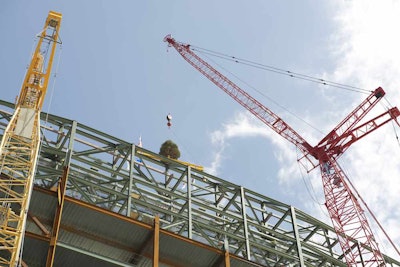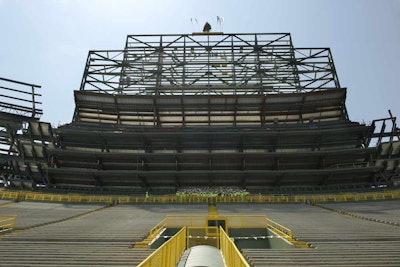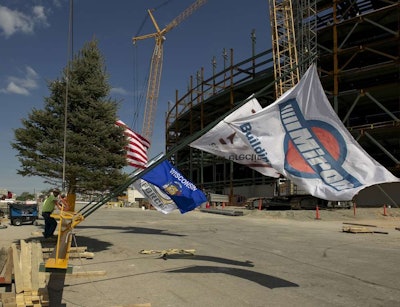
“Topping out”—putting the last structural steel beam or final roofing piece in place on a building—is a project milestone. To celebrate, many contractors place an evergreen on top of the building, which gets the Christmas touch during the holiday season.
It turns out that this construction celebration has ancient roots. The most widely cited story credits pre-Dark Age Scandinavian cultures, which reportedly placed a tree on top of a new building as an appeasement to spirts, a practice that eventually migrated—albeit with different symbolism—to America.
The evergreen usually stays on top until the building is finished.
But there are competitive tales to the Scandinavian version. One says the practice started in 2700 BC Egypt, when slaves placed a plant on top of a pyramid when it was completed to honor slaves who died during construction.
Another story has a more modern angle: when high rises were first built in this country, contractors employed several Native American workers, who according to the tale believed no man-made structure should be taller than a tree.
Whatever the slant, all stories say the evergreen symbolizes positive things—good luck for future occupants, continued growth, a safe job—and celebrates an important achievement in a building’s construction.
Although topping out ceremonies vary from firm to firm, in the gallery below a recent Miron Construction project at Lambeau Field in Green Bay, Wisconsin, celebrates the topping out tradition with a tree and several flags on the last-in-place girder.

